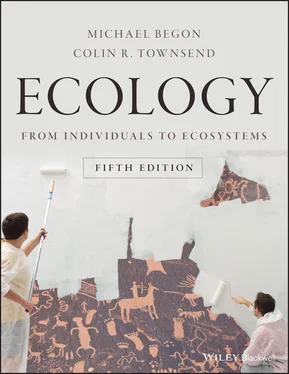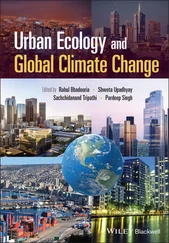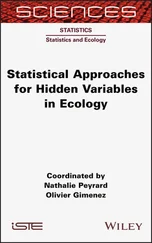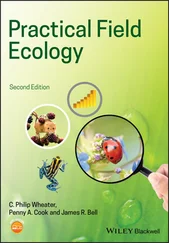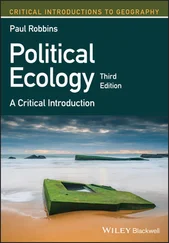
Figure 3.23 Effects of elevated CO 2 concentrations on C 3 and C 4 grasses are reversed over the longer term.(a) Changes in biomass over a 20‐year period in a free air CO 2enrichment facilities (FACE) experiment comparing the responses of C 3and C 4grasses to enhanced CO 2concentration ( e CO 2) relative to ambient levels ( amb CO 2). Data shown are three‐year moving averages. In an analysis of variance, the interaction between year, treatment and C 3/C 4was significant ( F = 7.2; P < 0.01): the difference in response between C 3and C 4grasses reversed over time. (b) The effect in the experiment on net nitrogen mineralisation (a measure of nitrogen availability to the plants averaged over successive five‐year periods). Bars are SEs among years. In an analysis of variance, the interaction between year, treatment and C 3/C 4was significant ( F = 4.0; P < 0.05): the difference in response between C 3and C 4grasses reversed over time.
Source : After Reich et al . (2018).
APPLICATION 3.4 Harmful effects of plants’ responses to CO 2enrichment
Along similar lines, it is well established that there is a general tendency for CO 2enrichment to change the composition of plants, and in particular to reduce nitrogen (and hence protein) concentrations in above‐ground plant tissues (Cotrufo et al ., 1998), which may in turn have indirect effects on plant–animal interactions, because insect herbivores may then eat more foliage to maintain their nitrogen intake and fail to gain weight as fast (Fajer, 1989). CO 2enhancement may also reduce concentrations in plants of other essential nutrients and micronutrients (see Section 3.5), contributing in turn to ‘micronutrient malnutrition’, which diminishes the health and economy of more than one‐half of the world’s human population (Loladze, 2002).
Examples of the effects on nitrogen content are shown in Figure 3.24. First, when wheat was grown at enhanced CO 2concentrations, effects depended on whether soils had adequate nitrogen (low‐N) or this was supplemented with further fertilisation (high‐N) ( Figure 3.24a). In the low‐N treatment, the protein concentration of individual grains was substantially reduced, but enhanced growth overall meant that the protein harvested from the grain was much less reduced. Indeed, in the high‐N treatment, the effect on concentration was negligible, such that the protein harvested overall from the grain was increased by CO 2enhancement. On the other hand, it was possible to pinpoint the reason for the lowered nitrogen content under CO 2enhancement, namely a reduction in nitrate assimilation efficiency ( Figure 3.24b) – likely to be a very common cause of nitrogen depletion in tissues following CO 2enhancement. Thus, while it may be possible to ameliorate the effects of future (and present) rises in CO 2concentrations by increased nitrogen fertilisation, this reduction in assimilation efficiency will substantially increase the fertilisation costs and the polluting levels of unassimilated nitrates in soil run‐offs.
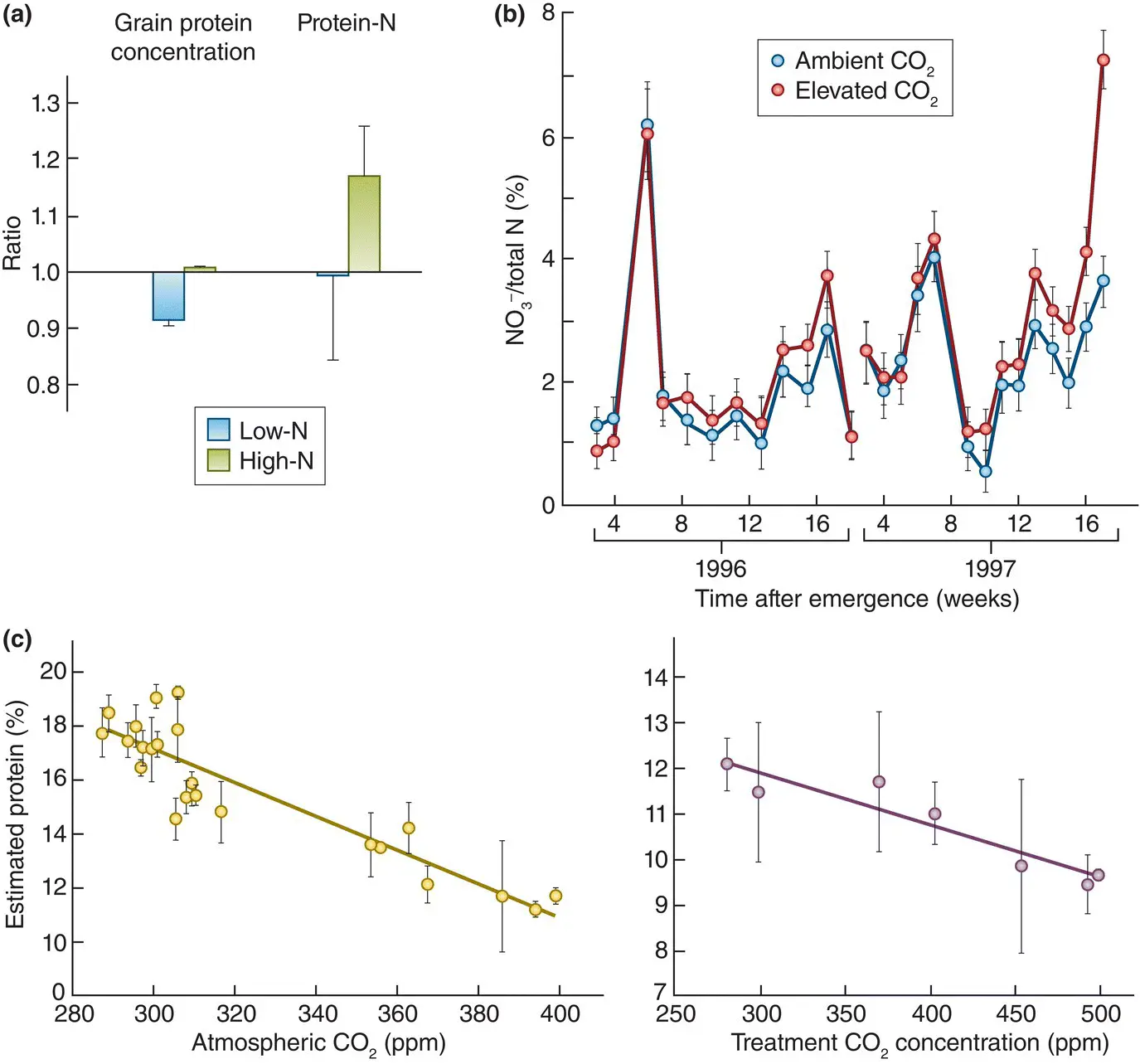
Figure 3.24 Effects of CO 2 enhancement on plant protein concentrations with potentially harmful consequences.(a) The ratios of grain protein concentration (left) and the total protein‐nitrogen harvested from wheat, Triticum aestivum (right) in a free air CO 2enrichment facilities (FACE) experiment comparing enhanced to ambient CO 2concentrations at low and high soil nitrogen levels. Bars are SEs. (b) The proportion of nitrogen in wheat leaves that was nitrate over the course of this same experiment, which was consistently higher at elevated than ambient CO 2concentrations ( P < 0.0001), indicative of lower nitrate assimilation at elevated concentrations. Bars are SEs. (c) The protein content of goldenrod ( Solidago spp.) pollen in relation to atmospheric CO 2concentration from museum collections from 1842 to 1998 (left, r 2= 0.81, P < 0.001) and from a FACE‐type experiment generating a CO 2gradient (right, r 2= 0.88, P < 0.01). Bars are SEs.
Source : (a) After Kimball et al . (2001). (b) After Bloom et al . (2014). (c) After Ziska et al . (2016).
A second example looked at the effect of increased CO 2concentrations on the protein content of pollen from goldenrod plants, Solidago spp., in the USA, widely acknowledged by apiarists to be essential for the health and winter survival of both native bees (e.g. Bombus spp.) and honey bees ( Apis melifera ). Data both from historical records of pollen collected as CO 2levels have risen, and from experiments that used a FACE‐like facility to establish a CO 2gradient, showed that the protein content of the pollen was reduced substantially by increases in CO 2concentrations ( Figure 3.24c). These reductions could have serious effects on bee numbers, on pollination rates and hence on plant productivity, but the generality of these effects, the abilities of bees to mitigate them through changes in their own behaviour, and indeed the extent of the harm done to bees all remain to be determined. Examples such as these, therefore, emphasise both how profound the potential implications of CO 2increases may be, in their own right, for future food security, and how difficult these implications can be to predict.
macronutrients and trace elements
It takes more than light, CO 2and water to make a plant. Mineral resources are also needed and these must be obtained from the soil or, in the case of aquatic plants, from the surrounding water. These include macronutrients (i.e. those needed in relatively large amounts) – nitrogen (N), phosphorus (P), sulphur (S), potassium (K), calcium (Ca), magnesium (Mg) and iron (Fe) – and a series of trace elements, for example, manganese (Mn), zinc (Zn), copper (Cu), boron (B) and molybdenum (Mo) ( Figure 3.25). Many of these elements are also essential to animals, although it is more common for animals to obtain them in organic form in their food than as inorganic chemicals. Some plant groups have special requirements. For example, aluminium is a necessary nutrient for some ferns, silicon for diatoms, and selenium for certain planktonic algae.

Figure 3.25 Periodic table of the elements showing those that are essential resources in the life of selected organisms.
Green plants do not obtain their mineral resources as a single package. Each element enters the plant independently as an ion or a molecule, and each has its own characteristic properties of absorption in the soil and of diffusion, which affect its accessibility to the plant even before any selective processes of uptake occur at the root membranes. All green plants require all of the ‘essential’ elements listed in Figure 3.25, although not in the same proportion, and there are some quite striking differences between the mineral compositions of plant tissues of different species and between the different parts of a single plant ( Figure 3.26).
Читать дальше
